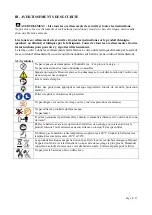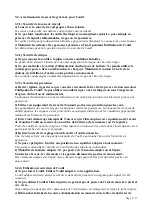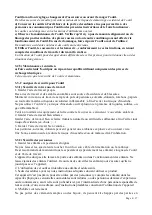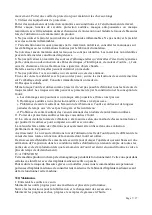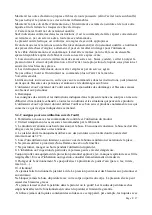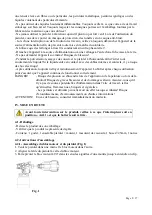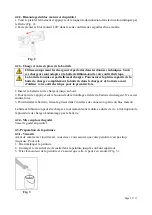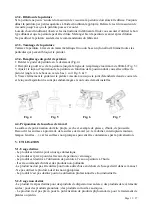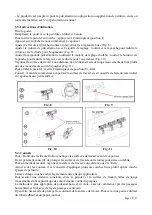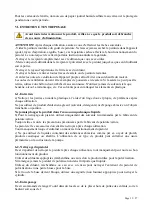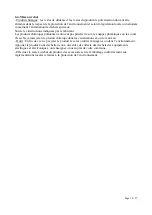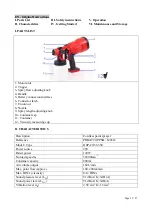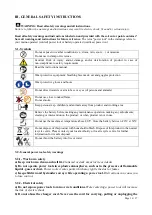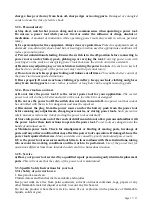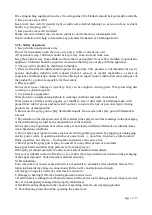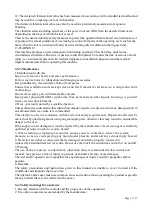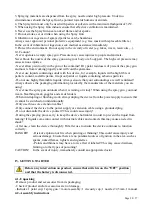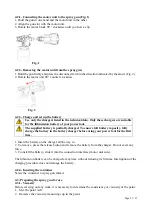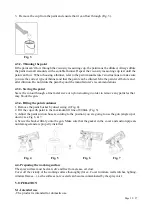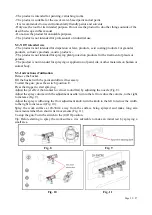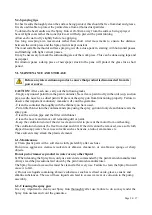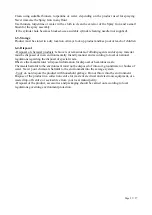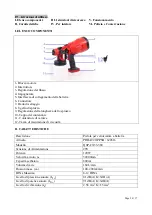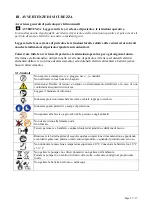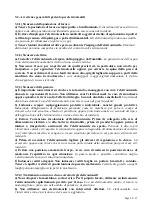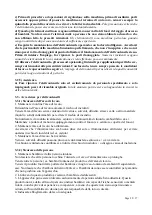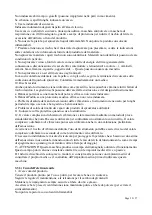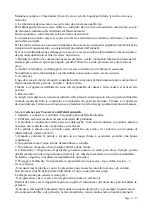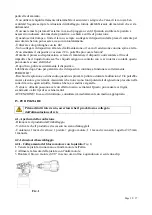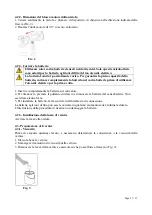
Page 18 / 37
Fire extinguishing equipment (such as fire extinguisher; fire blanket) should be kept readily available
2. Keep work area well lit
Keep work area well lit (natural light or sufficient artificial lighting) so as to avoid any accident
hazard (e.g; tripping; fall…)
3. Keep work area well ventilated.
Paints, solvents, diluents may create an explosive environment or contaminated air.
Good ventilation will help to minimize any potential fire hazard or breathing hazard.
3.3.2- Safety of persons
1. Keep children and persons away
Do not let bystanders touch the tool or its power cable or extension cord.
All bystanders (esp. children) should be kept away from tool and work area.
Keep the product away from children or from their environment. Never allow children to operate the
appliance. Children should be supervised to ensure that they do not play with the appliance.
2. The use of this product by children is forbidden.
3. Only well-instructed adults should operate the product. This product is not intended for use by
persons (including children) with reduced physical, sensory or mental capabilities, or lack of
experience and knowledge, unless they have been given supervision or instruction concerning use of
the product by a person responsible for their safety.
4. Dress properly
Do not wear loose clothing or jewellery; they can be caught in moving parts. Wear protecting hair
covering to contain long hair.
5. Use protective equipment
Wear protective equipment appropriate to working conditions and work environment
Wear protective helmet, safety goggles, ear mufflers, face or dust mask or breathing mask with
proper filter, rubber gloves and non-skid footwear to reduce the risk of personal injury during
products use or manipulation.
6. Do not use the spray gun to spray flammable liquids. Do not clean the spray gun with flammable
solvents.
7. Pay attention to the risks presented by the material to be sprayed, read the markings on the packaging
or the information provided by the manufacturer of the material.
Do not spray any liquid materials whose risks are not clearly identified. Materials not identified may
create hazardous conditions.
8. Do not spray near ignition sources such as electricity sparks (generated by plugging or unplugging
electric power cords, or operating switches or power tools ...), open fires, fireplaces, embers, naked
flame, cigarettes, hot objects, ... Such sparks and sources can cause a fire.
9. Do not point the spray gun or spray to oneself or to any other person or to animals.
Keep your hands and other body parts away from the spray jet.
If the spray jet should penetrate the skin, seek medical attention immediately.
In case of accidental contact with skin or eyes, follow the safety instructions written on the packaging
of the applied product. Seek immediate medical attention
10. Residual risks
Even when the tool is used as prescribed it is not possible to eliminate all residual risk factors. The
following hazards may arise in connection with the tool’s construction and design:
a. Damage to lungs if an effective dust mask is not worn.
b. Damage to hearing if effective hearing protection is not worn.
c. Health defects resulting from vibration emission if the power tool is being used over longer period of
time or not adequately managed and properly maintained.
d. Health hazard resulting from the vapours evaporating from the used spraying product.
11. Wear hearing protection while operating the power tool.

